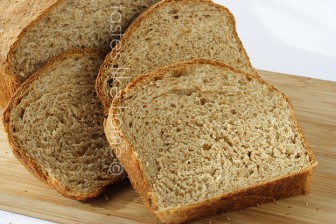Hi Everyone,
We’ve all been there – trying to make dough for breads, roti(s) or bakes and being frustrated by not knowing exactly how much water to use, or, following the suggested amount of water stipulated in a recipe only to end up with an overly sticky mass or with loose dry bits of something far removed from dough. The ambiguity of water to flour ratio for dough is one of the main reasons that people shy away from making their own breads and other items that require dough to be created.
While in many ways, baking is an exact science, certain processes that lead to creating a baked good can be elusive. Creating dough is one of them. Often one has to rely on experience and the sense of touch, but we all have to start somewhere. Experience is gained by getting involved, by watching by doing repeatedly, by experimenting.
 In this 2-part series, I want to spend some time pointing out some of the many reasons why creating dough can be tricky. Specifically, I’m referring to everyday dough, which means, dough for various types of yeasted breads, flat breads such as roti(s), and bakes. Hopefully, by the time you finish reading the series you will have some “ah ha” moments. Hopefully, you will be encouraged to try and make dough again and that we can continue this discussion in other forums.
In this 2-part series, I want to spend some time pointing out some of the many reasons why creating dough can be tricky. Specifically, I’m referring to everyday dough, which means, dough for various types of yeasted breads, flat breads such as roti(s), and bakes. Hopefully, by the time you finish reading the series you will have some “ah ha” moments. Hopefully, you will be encouraged to try and make dough again and that we can continue this discussion in other forums.
There are several factors that determine the water to flour ratio to create dough and it is for this reason that when asked the question: “How much water should I use to make the dough?” the answer given is, “It depends.”
It depends on the type of flour, the type of water, the temperature of the water, the type of liquid being used, the altitude of your location, other ingredients in the mixture and how the ingredients were measured, to name a few.
Let’s start with the type of flour. Back in 2010, I wrote a column, In Defence of All-Purpose Flour, in which I explained that all flours are not created equal. The composition of many flours – all-purpose, whole wheat, bran, rye or bread flour itself is different and made to the specifications of its individual manufacturer or brand owner. This is the reason why people swear by a particular brand, because it consistently works for them, every time. At the heart of this composition is the nutrient protein. Different flours have varying percentages of protein content. Protein is a set of amino acids arranged in different combinations, and depending on the type of flour and brand of flour, the proteins act and interact differently when combined with liquids or exposed to a little heat, air, acid or salt – all of which it encounters when it comes to creating dough.

Flours have different hydration levels. For example, whole grain flours tend to need more liquid due to the extra absorption by the bran.
Last week I discussed the types of water, looking at hard water and soft water. Again, because of the mineral make-up of these waters, the interaction with various flours will cause the proteins in the flour to react differently. In last week’s column, I also explained that dough made with hard water will result in a firmer texture, whether it is bread, bakes or roti, due to the cross linking effects of the minerals found in hard water. It is for this reason that people put added ingredients when making certain things to “soften” the texture.
Depending on the recipe, dough made with cold water, room temperature water, lukewarm water, warm water or hot water will each require a different amount of water to flour. The amount of water required might not be classified as a specific ratio, say 1:2 ratio meaning 1 cup water to 2 cups of flour. Rather the amount is determined by a knowing feel or touch of the dough. You see the importance of “feeling up” your food?
Added liquids to a dough mixture also alter the amount of water to be added to make dough. Such liquids could be yogurt, milk, buttermilk, oil, ghee, honey, molasses, eggs, butter or margarine.
Key also to the amount of water or liquid to be added to make dough is your location, in this case, the altitude of where you live. If you were living in the Swiss Alps or other high mountainous areas, 3-thousand feet and up, above sea level, then you would need to adjust the recipe. Adjustments will range from liquid content to resting time, to proofing to baking time and baking temperature.
How you measure the ingredients, particularly the flour, impacts the amount of water or liquid needed for the dough. Professionals always measure by weight rather than volume. Personally, I am a flip-flopper in this regard; I do both depending on how I feel or what the recipe prescribes. Most home cooks tend to measure by volume rather than weight, not everyone has a scale in their kitchen, digital or otherwise. However, weighing is often the preferred way of measuring because all measuring cups and spoons are not created equal either. Another thing to note, sifted ingredients do not carry the same weight as un-sifted ingredients. Actually, the whole point of sifting ingredients is to aerate and mix. Again, I am a flip-flopper here. The truth is that I like to buck certain notions when it comes to cooking; I like freedom in the kitchen.
So when it comes to measuring flour, do what makes you more comfortable, measuring either by volume or by weight, either way, the amount of water will be determined as you feel the dough when mixing.
Gosh I hope that you’re not rubbing your head or forehead at this time and screaming at me. Last night when I was discussing this with family friends, one had an “ah-ha” moment but when I started to talk about the PH balance of water etc. the other just said, “That’s too much science. I am going to continue buying bread.”
Next week I’ll conclude the series by offering some advice on making dough and explaining the importance of kneading and allowing the dough to rest and relax.
Cynthia





